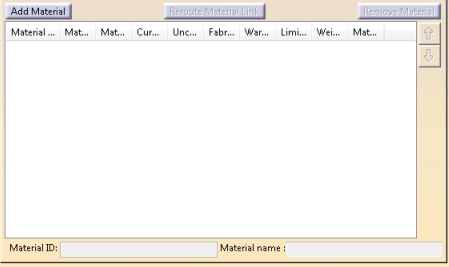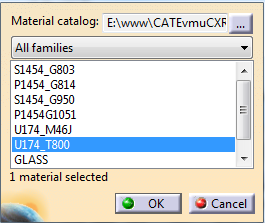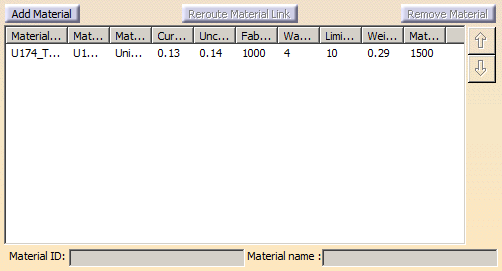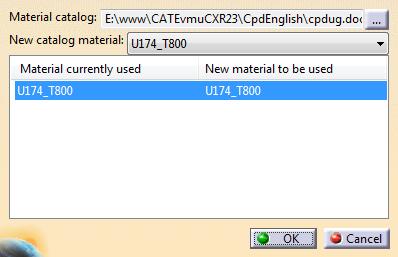 |
This task shows you how to define or reroute the materials used in your design.
See More about Materials and Laminates
for more information.
|
 |
Available in Composites Engineering Design (CPE), Composites Design for Manufacturing (CPM)
and Composites Braiding (CPB).
|
 |
Open an empty CATPart in either Composites Design or Grid Composites
Design.
|
 |
Adding Materials
-
Click Composites
Parameters  in the Parameters toolbar.
in the Parameters toolbar.
The
Composites Parameters opens at the Materials tab.

-
Click
Add Material. The Materials
dialog box is displayed:

Click ... and use the File Selection box to select a catalog of
materials
(e.g. CompositesCatalog.CATMaterial in the Samples directory).
The Materials dialog box is updated with the materials contained in this catalog.
A list allows you to filter the materials by family.
By
default it is set to All Families.
-
Select the materials (at least one) you want to use (press Ctrl for multi-selection) and click OK.
We have selected U174_T800.
You can repeat this step with another material catalog to select more
materials.
-
The Composites Parameters dialog box is
updated.

All columns, as well as the dialog box, are resizable.
Those columns list the material properties needed to update the CATPart:
| Material ID |
stands for Material ID |
| Material name |
stands for the Material name |
| Material type |
stands for Material type
(Uni-directional, Bi-Directional, Non-Structural) |
| Cur... |
stands for
Cured thickness (mm) |
| Unc... |
stands for
Uncured thickness (mm) |
| Fabr... |
stands for Fabric
width (mm) |
| War... |
stands for Warn
angle
(deg) |
| Limi... |
stands for Limit
angle (deg) |
| kg_.. |
stands for
(kg_m2), i.e. Weight per surface unit. |
| Mat... |
stands for Material density (kg_m3) |
|
 |
The parameters listed above are read from the material.
If those
parameters are not visible, it indicates that the material link is broken. |
|
|
-
Select one material.
- Use the Up and Down arrows to change
its order in the table
(and in commands defining zones and plies).
- Click Reroute
Material Link.
- Click Remove
Material to remove
it from the list.
|
-
The name of materials can be very long.
They are
displayed in the Material Name field, that cannot be edited.
You can give the material a shorter name in the Material ID
field.
-
Still in the Materials tab, select a material
in the list.
If its link to the catalog is broken, the properties information of that
material are not displayed.
Click Reroute Material Link.

-
Material catalog displays the name and path
of the catalog currently in use.
Click ... to select another catalog.
-
New catalog material lists the materials
available in the current catalog.
Correspondences are searched between the current material and those of
the new catalog.
- This search is based
on the names of the
materials.
- If a correspondence
is found, the
corresponding material
is proposed under
New material to be used.
Otherwise, this column
is left blank.
- If the
correspondence found is
not correct, or no
correspondence is found,
select a material from
the New catalog
material list.
|
Click OK to validate the new link, and revert
to the Composites Parameters dialog box.
|
|
 |



